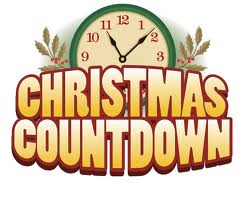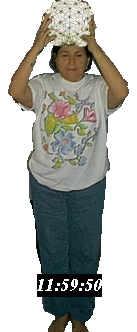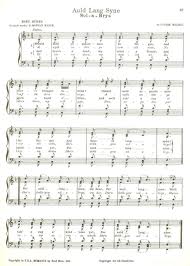
. 1759 ~ Burns Night commemorates the life of the Scottish bard (poet) Robert Burns, who was born on January 25, 1759. Burns’ best-known work is “Auld Lang Syne”.
Learn more about Burns Night
. 1858 ~ Felix Mendelssohn’s overture to “A Midsummer Night’s Dream” was first used as a wedding march. The bride was Queen Victoria’s daughter, the groom was the Crown Prince of Prussia.
. 1886 ~ Wilhelm Furtwängler, German conductor and composer
. 1905 ~ Julia Smith, American composer, pianist, and author on musicology
. 1913 ~ Witold Lutoslawski, Polish composer
More information about Lutoslawski
. 1921 ~ Mykola Dmytrovich Leontovych, composer, died at the age of 43. One of his most famous works was Carol of the Bells.
. 1938 ~ Etta James, Singer
. 1940 ~ Mary Martin recorded My Heart Belongs to Daddy — for Decca Records. The song was her signature song until she starred in “South Pacific” in 1949. Then, Larry Hagman’s mother had a new trademark: “I’m gonna wash that man right out of my hair…”
. 1945 ~ Richard Tucker debuted at the Metropolitan Opera House in New York City in the production of “La Gioconda”.
. 1945 ~ Vaughn Moore made it to the top of the Billboard Pop Chart with his hit, “Let it Snow! Let it Snow! Let it Snow!” The song is still one of the most popular holiday songs to this day.
. 1964 ~ The Beatles reached the #1 spot on the music charts, as their hit single, I Want to Hold Your Hand, grabbed the top position in “Cash Box” magazine, as well as on the list of hits on scores of radio stations. It was the first #1 hit for The Beatles. “Billboard” listed the song as #1 on February 1. The group’s second #1 hit song, She Loves You, was also released this day – but not on Capitol Records. It was on Swan Records. Other songs by The Beatles were released on Vee Jay (Please, Please Me), M-G-M (My Bonnie with Tony Sheridan), Tollie (Twist and Shout), Atco (Ain’t She Sweet) and the group’s own label, Apple Records, as well as Capitol.
. 1981 ~ Alicia Keys is an American R&B and soul singer-songwriter, pianist and actress. She was born in one of the roughest areas on New York (Hell’s Kitchen) where it was known in earlier decades as the home of organized crime. Keys attended Professional Performing Arts School where a number of other notable artists have attended including Britney Spears, and graduated at sixteen. She has had a successful career as a solo artist winning eleven Grammy Awards, and 4 top selling albums Songs in A Minor, The Diary of Alicia Keys, Unplugged and As I Am . She has also had a number of singles that have not only topped the charts in the US but around the world including “Fallin'” and “No One”.
. 1999 ~ Robert Shaw passed away. Shaw was an American conductor most famous for his work with his namesake Chorale, with the Cleveland Orchestra and Chorus, and the Atlanta Symphony Orchestra and Chorus. Shaw received 14 Grammy awards, four ASCAP awards for service to contemporary music, the first Guggenheim Fellowship ever awarded to a conductor, the Alice M. Ditson Conductor’s Award for Service to American Music; the George Peabody Medal for outstanding contributions to music in America, the Gold Baton Award of the American Symphony Orchestra League for “distinguished service to music and the arts,” the American National Medal of Arts, France’s Officier des Arts et des Lettres, England’s Gramophone Award, and was a 1991 recipient of the Kennedy Center Honors.
. 2004 ~ Ronald Fredianelli, a co-founder of the 1950s pop vocal group the Gaylords, died in Las Vegas. He was 73. Fredianelli, who performed as Ronnie Gaylord teamed with Bonaldo Bonaldi and Don Rea in the early 1950s. Bonaldi performed as Burt Holiday. Their debut song, Tell Me You’re Mine, was a Top 10 hit in 1953. Other hits included From the Vine Came the Grape and The Little Shoemaker. Although the Gaylords formed in Detroit, Fredianelli and Bonaldi became a staple in Nevada showrooms, where they performed for decades as Gaylord and Holiday. Bonaldi and Rea live in Reno. One of Fredianelli’s sons, Anthony, is the guitarist for the rock group Third Eye Blind.
. 2015 ~ Artemios “Demis” Ventouris Roussos (June 15 1946-January 25, 2015) was a Greek singer and performer who had international hit records as a solo performer in the 1970s after having been a member of Aphrodite’s Child, a progressive rock group that also included Vangelis. He has sold over 60 million albums worldwide.
. 2018 ~ John Morris, American film and Broadway composer who commonly worked alongside Mel Gibson and Gene Wilder, died of a respiratory infection at the age of 91.
. 2021 – People celebrated the Chinese New Year:








